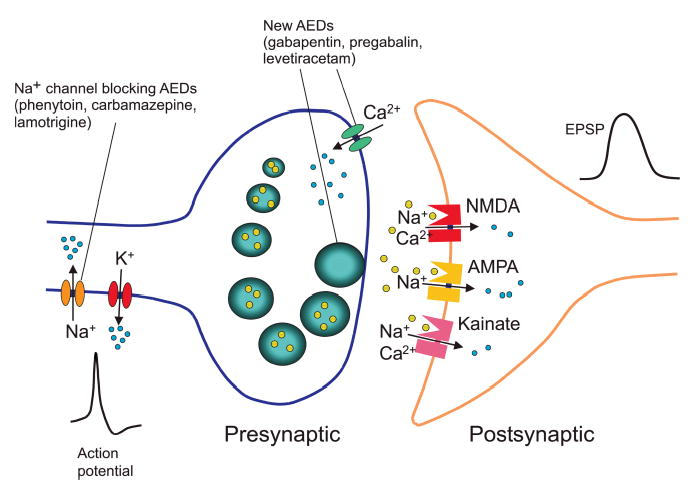Figure 1.

Model synapse illustrating interaction of Na+ channel blocking AEDs with voltage-activated Na+ channels and putative sites of action of newer AEDs that may more directly interact with release machinery. Gabapentin and pregabalin bind to α2-δ, which may inhibit voltage-activated Ca2+ entry through high voltage-activated Ca2+ channels or affect the way in which Ca2+ channels interact with vesicular release. Levetiracetam may also affect release by binding to synaptic vesicles protein SV2A. Action potentials are mediated by voltage-activated Na+ and K+ channels; Na+ channel blocking AEDs suppress epileptiform action potential firing, which leads to inhibited release. Small blue circles indicate ions; larger yellow circles represent glutamate within synaptic vesicles and free in the synaptic cleft. Glutamate acts on ionotropic receptors (of the NMDA, AMPA and kainate types) to generate an excitatory postsynaptic potential (EPSP) in the postsynaptic neuron.
